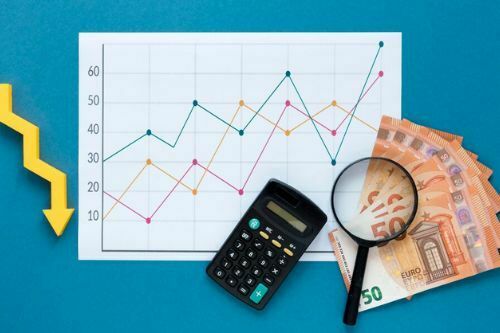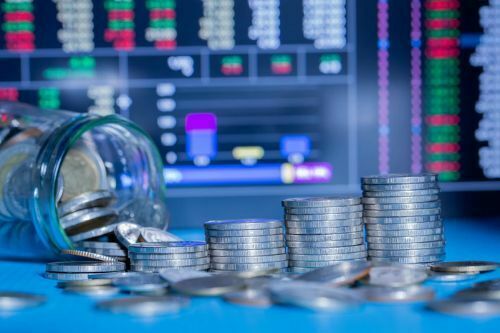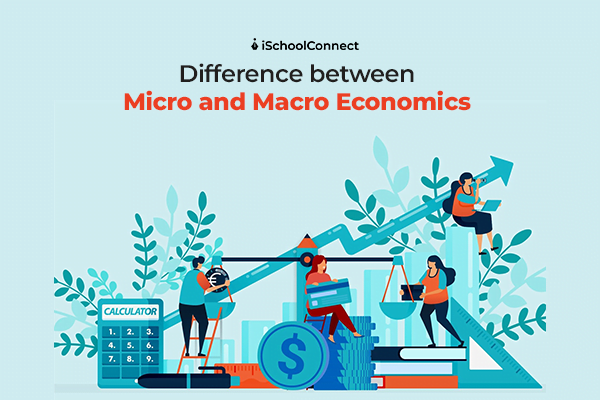Table of Contents
What is Economics?
‘Economics’ is defined as the study of how humans collaborate to convert finite resources into commodities and services to meet their (infinite) wants and how they share the same among themselves. Microeconomics and macroeconomics are the two primary disciplines of economics, you should know about for any study abroad exam you may need to give.
In this blog, we have broken down the idea and all of the key differences between microeconomics and macroeconomics.
Microeconomics | Definition
Micro is the study of the behavior and performance of individual economic players within the economy, such as consumers, families, industries, and businesses. It determines how limited resources are allocated among individuals to satisfy their demands. It also provides the requirements for making the optimum use of resources to maximize production and social welfare.
In this case, demand is important in establishing the quantity and price of a product, as well as the price and quantity of related items (complementary goods) and replacement products, to make an informed decision about the allocation of scarce resources based on their alternative uses.

The study of how individuals and households spend their money is known as microeconomics. How do individuals decide how much money to set aside for unforeseen expenses? What mix of items and services best satisfies their requirements and preferences within their limited budget?
It also specifies what and how many goods or products a firm must manufacture to be profitable. What should the company’s target audience be charged for its goods and services? What sources of capital would the company require to start or run the business? How many employees will be hired, and at what rate will they be hired? When should the firm expand, downsize, or shut down?
Macroeconomics | Definition
Macroeconomics is the study of the overall economic phenomena or the total economy. It is mainly concerned with the behavior and performance of aggregate variables and issues that affect the economy.
It addresses significant economic concerns such as unemployment, poverty, the general price level, total consumption, total savings, GDP (Gross Domestic Product), imports and exports, economic growth, globalization, monetary/ fiscal policy, and so on.
In this section, we will look at how the equilibrium is reached as a result of changes in macroeconomic factors. Does it determine the degree of economic activity in the economy? What are the country’s rates of unemployment, poverty, and inflation? Which factors cause the economy to speed up or slow down? What is the country’s standard of living? What is the cost of living in the country?
Furthermore, macroeconomics not only examines challenges that the economy faces but also assists in resolving them, allowing it to run efficiently.

Key Differences between Micro and Macro Economics
| Microeconomics | Macroeconomics |
| Microeconomics studies the particular segment of the economy, i.e. an individual, household, firm, or industry. It studies the issues of the economy at an individual level. | Macroeconomics studies the economy as a whole, that does not talk about a single unit rather it studies aggregate units, such as national income, general price level, total consumption, etc. It deals with broad economic issues. |
| Microeconomics focuses on individual economic units. | The focus of macroeconomics is on aggregate economic factors. |
| Microeconomics is used to solve operational or internal problems. | Macroeconomics, on the other hand, is concerned with environmental and external issues. |
| Demand and supply are the fundamental tools of microeconomics. | The primary tools of macroeconomics are aggregate demand and aggregate supply. |
| Microeconomics is concerned with a single product, business, household, industry, salaries, costs, and so on. | Macroeconomics is concerned with aggregates such as national income, production, market price, total consumption, total savings, total investment, and so on. |
| Microeconomics deals with concerns such as how the price of an item affects the amount sought and quantity provided, among other things. | Macroeconomics is concerned with significant economic concerns such as unemployment, monetary/ fiscal policy, poverty, international commerce, price inflation, deficit, and so on. |
| Microeconomics determines the price of a product as well as the prices of complementary and replacement products. | Macroeconomics aids in the maintenance of the overall price level as well as the resolution of important economic concerns such as inflation, deflation, disinflation, poverty, unemployment, and so on. |
| Microeconomics examines any economy from the ground up. | In contrast, macroeconomics has a top-down approach. |
Pros & Cons for Micro and Macro Economics
Pros
| Microeconomics | Macroeconomics |
| It helps in the determination of prices of a particular product and also the prices of various factors of production, i.e. land, labor, capital, organization, and entrepreneur. | It helps determine the balance of payments along with the causes of the deficit and surplus of it. |
| It is based on a free enterprise economy, which means the enterprise is independent in taking decisions. | It helps in deciding the economic and fiscal policies and solves the issues of public finance. |
Cons
| Microeconomics | Macroeconomics |
| The assumption of full employment is completely unrealistic. | Its analysis says that the aggregates are homogeneous, but it is not so because sometimes they are heterogeneous. |
| It only analyses a small part of an economy while a bigger part is left untouched. | It covers only the aggregate variables which avoid the welfare of the individual. |
Key Takeaways
- Micro and Macro Economics are neither different subjects, nor they are contradictory, rather, they are complementary.
- Micro and macroeconomics are the two aspects of the same coin, wherein one’s demerit is another’s merit, and, in this way, they cover the whole economy.
- The only important point which makes them different is the area of application.
- Investors may use microeconomics to make investment decisions, but macroeconomics is mostly used to formulate economic and fiscal policy.
We hope this blog post was informative. If you have any queries, please reach out to us here. We will be happy to help you. You can also share your thoughts by leaving a comment below.
Liked this blog? Read next: Frequently asked questions in economics interview you must know about
FAQs
Q1. What are some examples of micro and macroeconomics?
Answer – Macroeconomics includes unemployment, interest rates, inflation, and GDP. Microeconomic examples include consumer equilibrium, individual income, and savings.
Q2. How are Microeconomics and Macroeconomics related?
Answer – Because both techniques attempt to enhance the economy of their respective sectors and branches, microeconomics and macroeconomics are intricately intertwined.
Q3. What Exactly Is Global Macro Strategy?
Answer – A global macro strategy is an investing and trading strategy focused on significant macroeconomic events on a national or worldwide scale. The term “Global Macro” refers to the study and analysis of various macroeconomic elements such as interest rates, currency levels, political events, and national relations.






